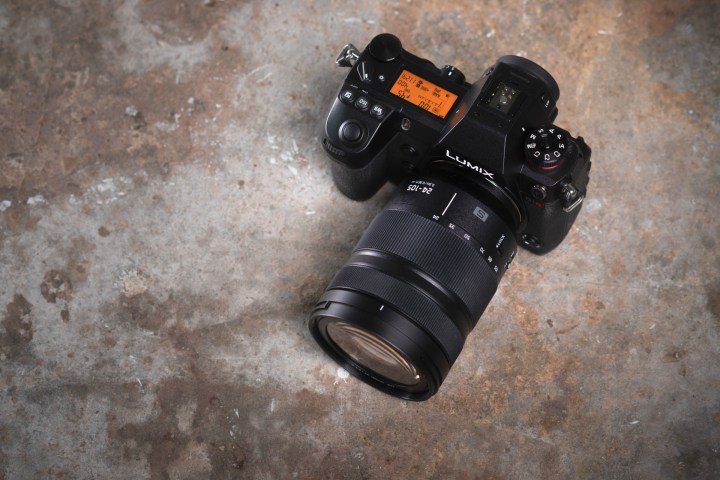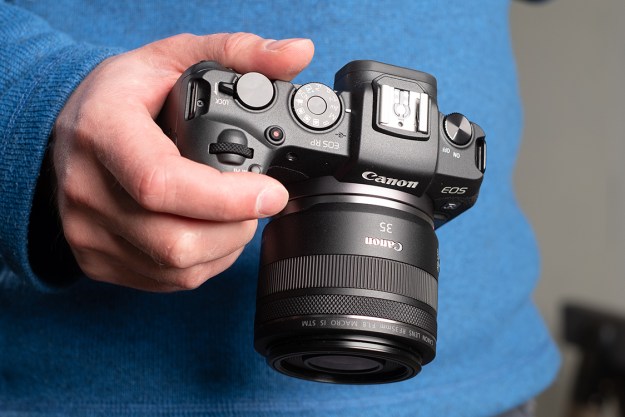After years of focusing on the smaller Micro Four Thirds format, Panasonic’s entry into the full-frame market came as a surprise. Its first two full-frame cameras — the Lumix S1R and S1 — are professional machines ready to take on the best that Sony, Nikon, and Canon have to offer.

The S1 and S1R are more similar than they are different, with spec sheets that read as near carbon copies of each other, save for a couple key differences. While both can shoot 4K video at up to 60 frames per second, the 47-megapixel S1R is decidedly more focused on the still photographer, while the 24-megapixel S1 is a true hybrid still/video camera. There is also a large price difference: $3,700 for the S1R, $2,500 for the S1.
But even if money is no object, the S1R isn’t necessarily the better the camera. It all depends on what you need. Here’s how these twin cameras compare, and why one may be the better choice for you.
| Panasonic Lumix S1R
|
Panasonic Lumix S1
|
|
| Sensor | 47.3-megapixel full-frame sensor | 24-megapixel full-frame sensor |
| Burst speed | Up to 9 fps (6 with AF-C) | up to 9 fps (6 with AF-C) |
| Shutter speed | 1/8,000 to 60 sec. | 1/8,000 to 60 sec. |
| ISO | 100-25,600 (50-51,200 expanded) | 100-51,200 (50-204,800 expanded) |
| Autofocus | 225-point contrast-detection DFD AF | 225-point contrast-detection DFD AF |
| Image stabilization | 5-axis sensor-shift stabilization | 5-axis sensor-shift stabilization |
| Video | 4K/30p and 60p with 1.09x crop, 8-bit | 4K/30p, 4K/60p with 1.5x crop, HLG (V-Log via firmware update) |
| Viewfinder | 0.78x magnification, 5.7m-dot OLED | 0.78x magnification, 5.7m-dot OLED |
| LCD | 3.2-inch, 2.1m-dot tilting touchscreen | 3.2-inch, 2.1m-dot tilting touchscreen |
| Connectivity | Wi-Fi, Bluetooth | Wi-Fi, Bluetooth |
| Battery | Li-ion rated at 360 shots | Li-ion rated at 380 shots |
| Dimensions (WxHxD) | 5.87 x 4.33 x 3.82 inches | 5.87 x 4.33 x 3.82 inches |
| Weight | 35.8 ounces | 35.8 ounces |
| Kit lens | Available body only or with 24-105mm f/4 | Available body only or with 24-105mm f/4 |
| Price | $3,700 body-only | $2,500 body-only |
| Read more | Panasonic Lumix S1R Review | Panasonic Lumix S1 Review |
| Buy now | B&H Photo | Amazon |
Sensor
If it’s resolution you need, the Lumix S1R has more than enough. Its 47-megapixel sensor is the highest-resolution full-frame sensor in any mirrorless camera, but it doesn’t stop there. In high-resolution mode, which composites eight images into one, it produces an almost ridiculous 187 megapixels. The resulting 300-megabyte RAW file is a force to be reckoned with.
- 1. Shot on the Lumix S1R
- 2. Shot on the Lumix S1
But that much resolution is overkill for the vast majority of photographers, and the Lumix S1’s more modest 24MP sensor will handle most jobs with ease. It also boasts the better low-light performance, with a higher maximum ISO on paper and less noise in practice based on our testing. And if you do need oodles of resolution, the S1 also has a high-resolution mode; here, it’s good for 96MP — that’s not 187, but it’s still more than enough for all but the most specialized tasks.
Speed
Normally, a higher-resolution camera will be slower than a lower-resolution one, but Panasonic chose to give both S-series models the same continuous shooting speeds: 6 frames per second with continuous autofocus, 9 fps with focus locked. Where they differ is with the buffer depth. Since both cameras use the same image buffer, but the S1’s 24MP files take up less space than the S1R’s 47MP files, the S1 can shoot continuously for 75 RAW images while the S1R slows down after just 32.
Both cameras also benefit from fast XQD cards, with support coming in the future for even faster CFExpress cards. This allows the cameras to clear their buffers considerably faster than competing models that only use SD cards, for example.
Video
Other than the sensor, this is where the two cameras differ the most dramatically. Serious videographers will find more to like about the Lumix S1, which can record 4K/30p from the full width of the sensor or
The S1R records both 4K/30p and
Autofocus
Both the S1R and S1 feature the same, 225-zone autofocus system that uses Depth from Defocus (DFD) contrast detection rather than the more standard phase detection employed by other modern mirrorless cameras. In practice, DFD works very well most of the time, but is less reliable for continuous autofocus and can cause focus “breathing” in video as it has to constantly make tiny back-and-forth adjustments. If you rely heavily on continuous autofocus performance — say, for sports — you may be better off with a Sony or a Nikon.
Design

The cameras look virtually identical, sharing the same physical design, build quality, and control layout. Both share a 5.7-million-dot electronic viewfinder, which is the best we’ve ever seen. Both also have SD and XQD card slots and 3-inch tilting LCD screens. Overall, this is the most professional mirrorless design we’ve tested, but it is also very large and heavy — over 2 pounds with the battery and memory cards loaded. The high-resolution EVF also draws a lot of power, giving the S1 a battery rating of 380 exposures and the S1R a bit less at 360 (a power-saving mode can extend this to over 1,000).
While both cameras are equal in the design department, we have to draw attention here to S1’s lower price. It costs $1,200 less than the S1R, but comes with zero sacrifices on handling or operation.
Value
If we had to pick a winner between these two cameras, we’d choose the Lumix S1. The S1R is the more impressive model from a numbers perspective, but the S1 is simply the better buy for the majority of users. You get the same control and build quality, better video specifications, better low-light performance, and a good balance between speed and resolution, with options for either 24MP standard photos or 96MP multi-shot composites. Outside of the S series, the S1 doesn’t really have a true competitor — but at $2,500, it costs about $500 more than Sony’s and Nikon’s 24MP mirrorless cameras, the A7 II and Z 6, respectively
Editors' Recommendations
- Smaller and cheaper, the full-frame Lumix S5 is exactly what Panasonic needed
- What really determines your camera’s resolution? We asked an expert
- Sony vs. Nikon: How to choose between two great camera brands
- Leica SL2 vs Panasonic Lumix S1R: Two L-mount leaders with one big difference
- Panasonic Lumix S1H camera will offer limitless 6K recording for $4,000








